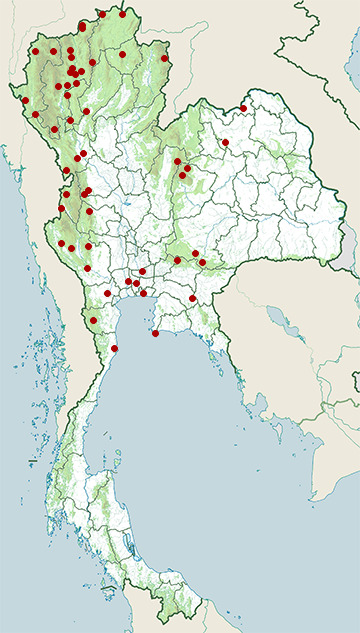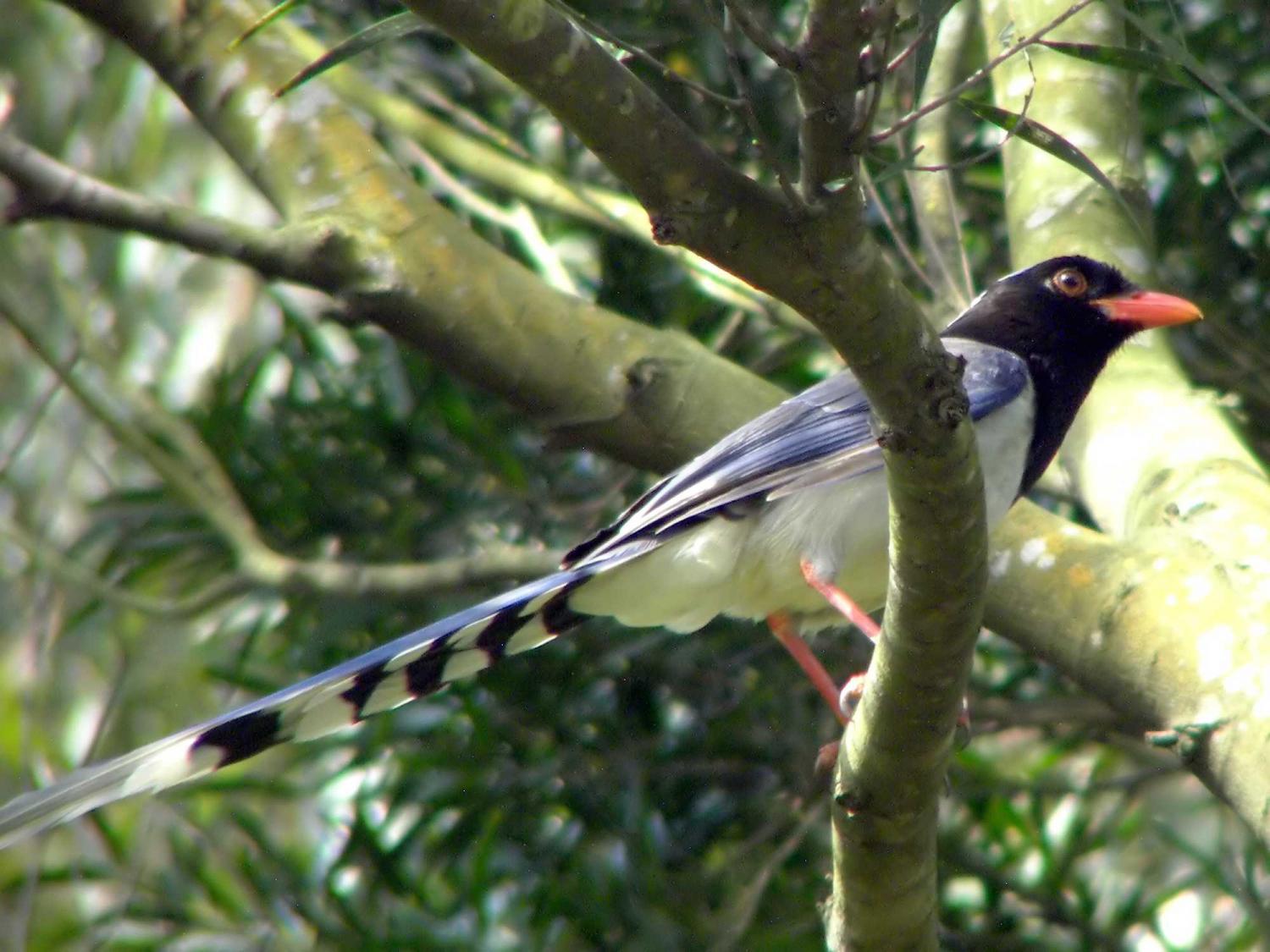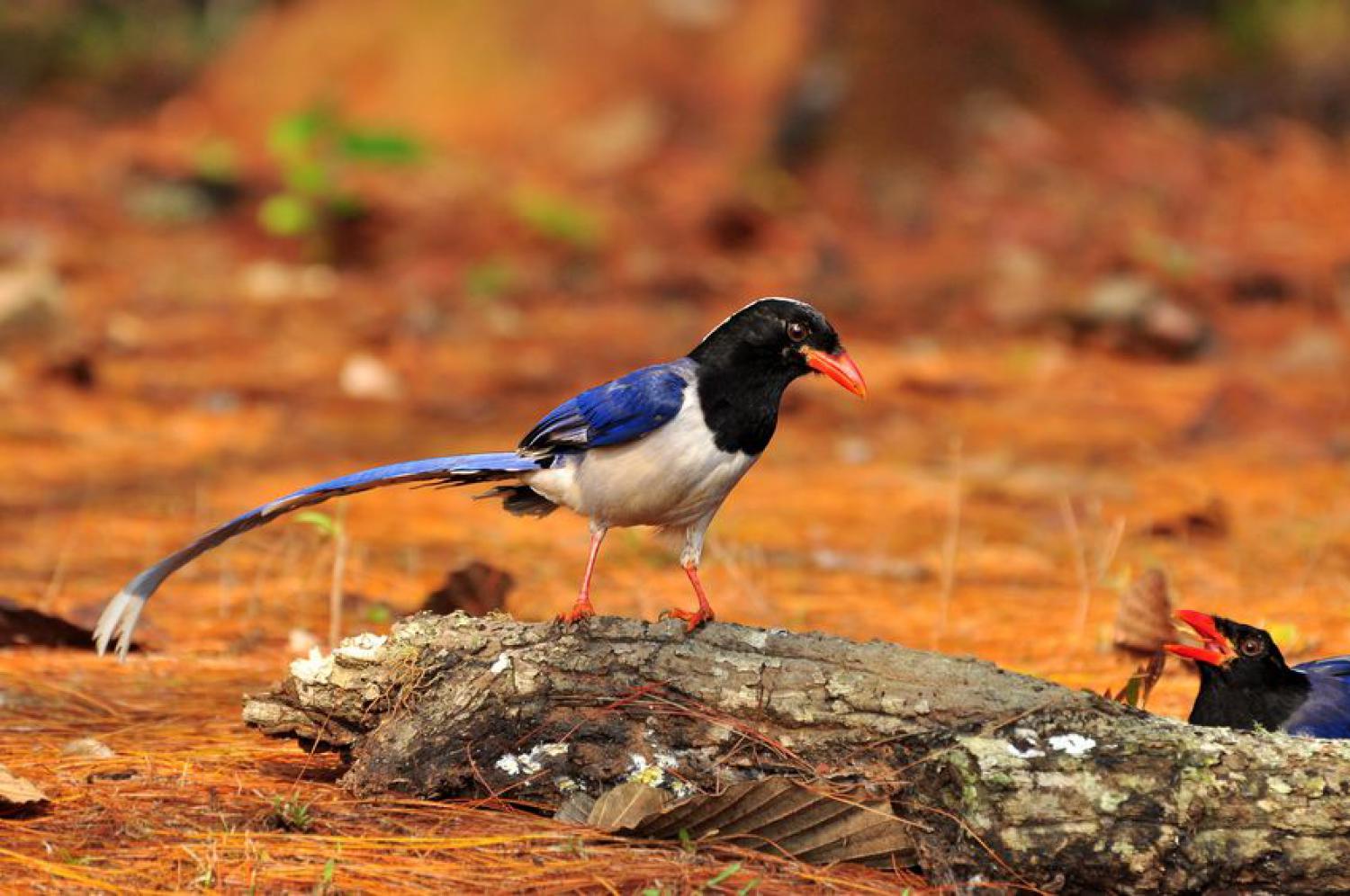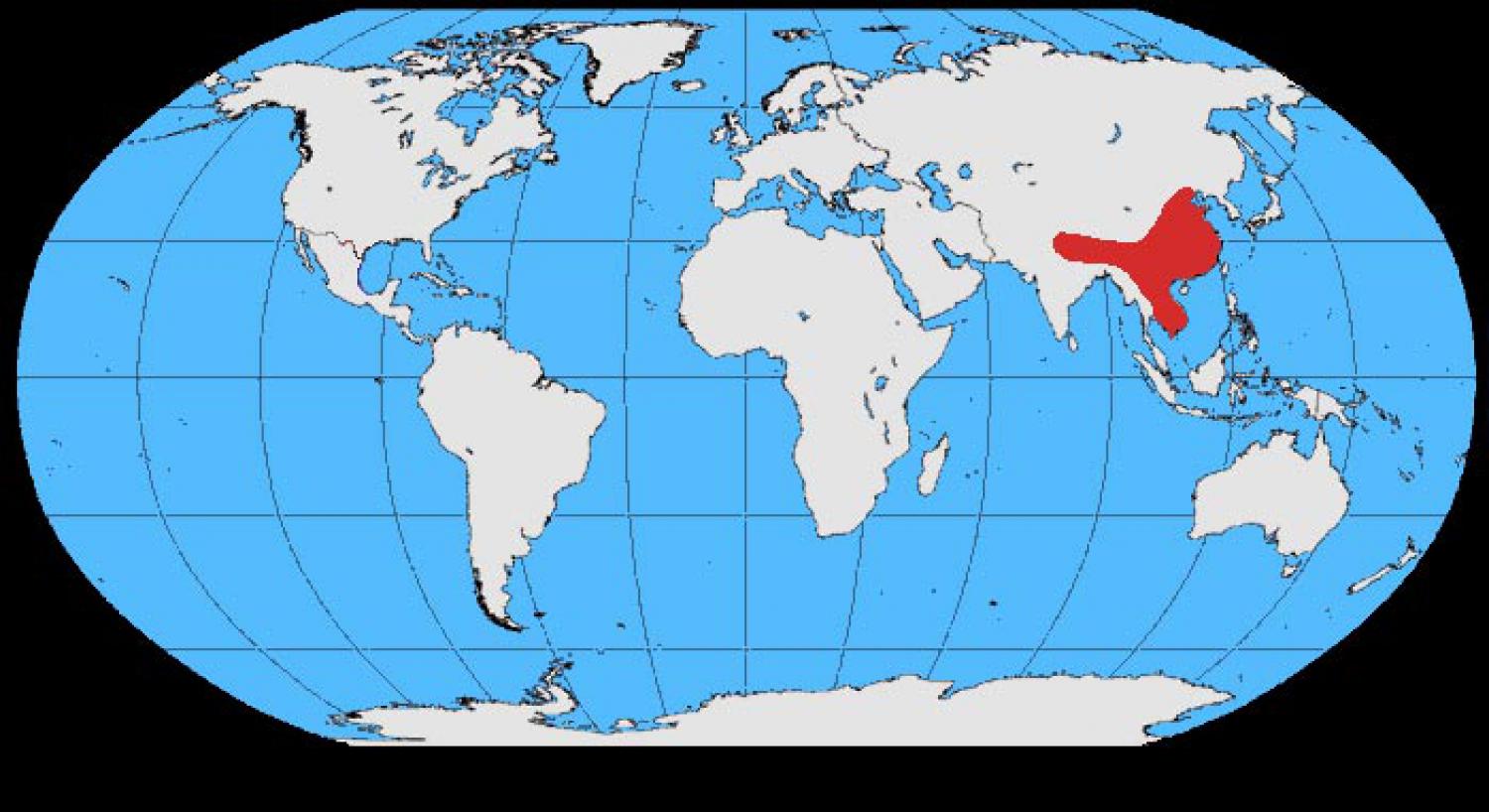Species of Thailand
Red-billed blue magpie
Urocissa erythroryncha
Pieter Boddaert, 1783
In Thai: นกขุนแผน
The red-billed blue magpie (Urocissa erythroryncha) is a species of bird in the crow family, Corvidae. It is about the same size as the Eurasian magpie but has a much longer tail, one of the longest tails of any corvid. It is 65 – 68 cm round=0.5 long and weighs 196 - 232 g.
Taxonomy
The red-billed blue magpie was described by the French polymath Georges-Louis Leclerc, Comte de Buffon in 1775 in his Histoire Naturelle des Oiseaux. The bird was also illustrated in a hand-coloured plate engraved by François-Nicolas Martinet in the Planches Enluminées D'Histoire Naturelle which was produced under the supervision of Edme-Louis Daubenton to accompany Buffon's text. Neither the plate caption nor Buffon's description included a scientific name but in 1783 the Dutch naturalist Pieter Boddaert coined the binomial name Corvus erythrorynchus in his catalogue of the Planches Enluminées. The specimen described by Buffon had come from China but the type location was restricted to Canton by Hugh Birckhead in 1937. The red-billed blue magpie is now one of five species placed in the genus Urocissa that was introduced by the German ornithologist Jean Cabanis in 1850. The name of the genus combines the Ancient Greek oura meaning "tail" and kissa meaning "magpie". The specific epithet erythroryncha combines the Ancient Greek eruthros meaning "red" and rhunkhos meaning "bill".
Five subspecies are recognised:
- U. e. occipitalis (Blyth, 1846) – northwest India to east Nepal
- U. e. magnirostris (Blyth, 1846) – northeast India to south Indochina
- U. e. alticola Birckhead, 1938 – north Myanmar and south central China
- U. e. brevivexilla R. Swinhoe, 1874 – northeast China
- U. e. erythroryncha (Boddaert, 1783) – central, east and southeast China, north Indochina
Description
The head, neck and breast are black with a bluish spotting on the crown. The shoulders and rump are a duller blue and the underparts are a greyish cream. The long tail is a brighter blue (as are the wing primaries) with a broad white tip. The bill is a bright orange-red as are the legs and feet and a ring around the eye. This red can vary across its range to almost yellow in some birds.
Habits and habitat
The red-billed blue magpie occurs in a broad swathe from the northern parts of the Indian Subcontinent, and further eastwards. It ranges from the Western Himalayas eastwards into Myanmar, Cambodia, Laos and Vietnam and through central and eastern China to southwest Manchuria, in evergreen forest and scrub in predominantly hilly or mountainous country. It has adapted to urban habitat and can be seen in large cities in China such as Beijing and Hong Kong. They nest in trees and large shrubs in a relatively shallow nest. There are usually three to five eggs laid.
Food is sought both in trees and on the ground. It takes the usual wide range of food, such as invertebrates, other small animals, and fruit and some seeds. It robs nests of eggs and also chicks. Vocal mimicry is very apparent in this species and its calls are very varied, but the most usual are a grating rattle and a high pitched whistle a little like a flute.
This article uses material from Wikipedia released under the Creative Commons Attribution-Share-Alike Licence 3.0. Eventual photos shown in this page may or may not be from Wikipedia, please see the license details for photos in photo by-lines.
Category / Seasonal Status
BCST Category: Recorded in an apparently wild state within the last 50 years
BCST Seasonal status: Resident or presumed resident
Scientific classification
- Kingdom
- Animalia
- Phylum
- Chordata
- Class
- Aves
- Order
- Passeriformes
- Family
- Corvidae
- Genus
- Urocissa
- Species
- Urocissa erythroryncha
Common names
- Thai: นกขุนแผน
Conservation status

Least Concern (IUCN3.1)
Photos
Please help us review the bird photos if wrong ones are used. We can be reached via our contact us page.
Range Map

- Ban Hong Non-Hunting Area
- Bangkok Province
- Chaloem Rattanakosin National Park
- Chiang Dao Wildlife Sanctuary
- Chiang Saen District, Chiang Rai
- Doi Chong National Park
- Doi Inthanon National Park
- Doi Lo District, Chiang Mai
- Doi Pha Hom Pok National Park
- Doi Saket District, Chiang Mai
- Doi Suthep - Pui National Park
- Fang District, Chiang Mai
- Huai Kha Khaeng Wildlife Sanctuary
- Kaeng Krachan National Park
- Khao Ang Rue Nai Wildlife Sanctuary
- Khao Sam Roi Yot National Park
- Khao Yai National Park
- Khlong Luang District, Pathum Thani
- Khon San District, Chaiyaphum
- Khun Chae National Park
- Khun Nan National Park
- Lan Sang National Park
- Mae Fa Luang District, Chiang Rai
- Mae Ngao National Park
- Mae Ping National Park
- Mae Rim District, Chiang Mai
- Mae Taeng District, Chiang Mai
- Mae Wong National Park
- Mueang Chiang Mai District, Chiang Mai
- Mueang Lamphun District, Lamphun
- Mueang Ratchaburi District, Ratchaburi
- Mueang Tak District, Tak
- Nam Nao National Park
- Namtok Mae Surin National Park
- Namtok Pha Charoen National Park
- Omkoi Wildlife Sanctuary
- Pai District, Mae Hong Son
- Pang Sila Thong District, Kamphaeng Phet
- Phon Phisai District, Nong Khai
- Phu Foi Lom National Park
- Phu Khiao Wildlife Sanctuary
- Phutthamonthon District, Nakhon Pathom
- Sakaerat Environmental Research Station
- Salak Pra Wildlife Sanctuary
- Salawin National Park
- Samae San Island
- Samut Prakan Province
- Sri Nakarin Dam National Park
- Thap Lan National Park
- Thong Pha Phum District, Kanchanaburi
- Thung Yai Naresuan Wildlife Sanctuary
- Umphang Wildlife Sanctuary
- Wiang Lo Wildlife Sanctuary



